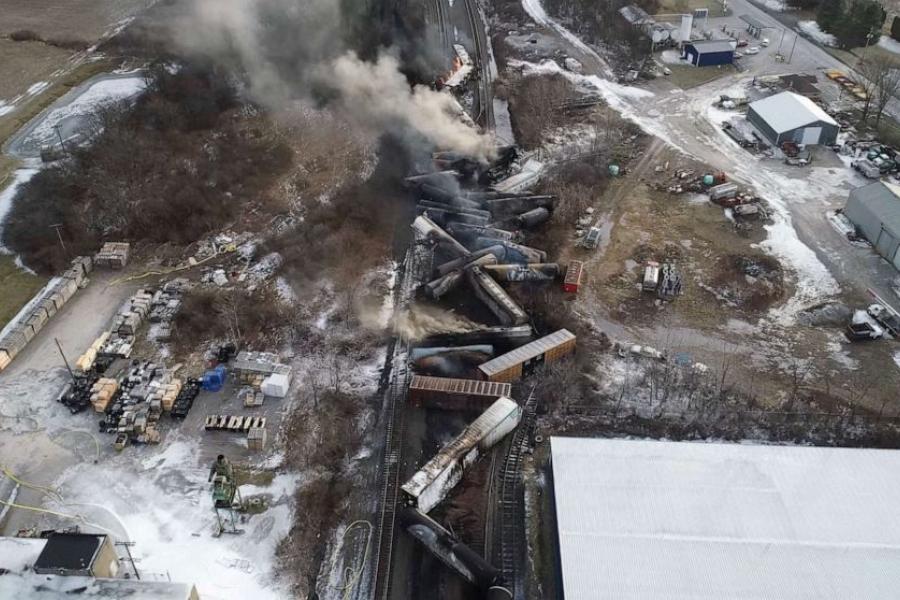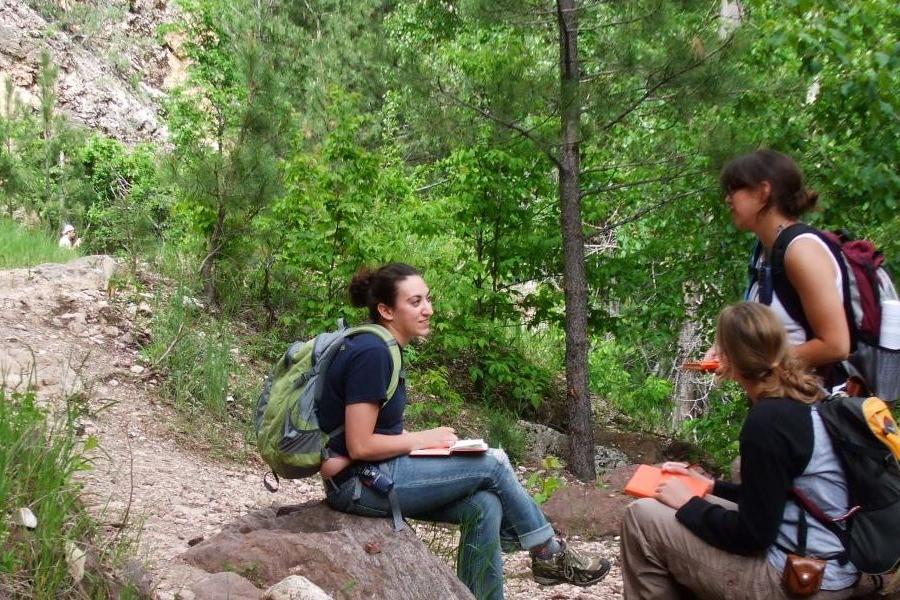Department of Geography

‘I Try to Have Fun and Experiment With Different Angles and Depths’
Kent State senior Sydney Weber sees extraordinary images through her lens and an exciting career in her future.

Does Recent Extreme Weather Suggest a Change in the Wind?
Cameron Lee, Ph.D., assistant professor of geography at Kent State University, shares his expertise on the possible reasons behind the spate of recent extreme weather events happening across the globe. Lee, who was recently interviewed on the topic during the “Ray Horner Morning Show” on WAKR-AM in Akron, Ohio, specializes in climate and weather change.

IN A FLASH: Everybody Wave to the Drone!
Young explorers participating in the Bioblitz event had an opportunity to learn about how drones can help ecology efforts.

Building More Sustainable Cities - with Lego
Familiar building bricks help students devise and visualize sustainable solutions for urban environments.

Kent State Experts Weigh in on Aftermath of East Palestine Train Derailment
Kent State University faculty members have been contacted by various media outlets to lend their expert opinions and insight as cleanup work, air monitoring, water testing and more continues following the Feb. 3 train derailment in East Palestine, Ohio.

Department of Geography Offering Study Abroad Options Year-Round
Starting in Spring 2023, the Department of Geography will have a continuous study abroad program for the first time. Both Environmental Studies majors and Geography majors can take classes for their major while spending either a semester in Florence, participating in the Florence Summer Institute, o…
Students Conduct Landscape Ecology Research to Discover Effects of Sea Level Rise
Saying "yes" to everything landed Kathryn Burns in the middle of New Jersey's coastal wetlands

Kent State Geography Professors to Assess Relative Extreme Temperature Events and Develop Monitoring Tools With NOAA
Principal Investigator Cameron C. Lee, Ph.D., assistant professor in the Department of Geography (within the College of Arts and Sciences) at Kent State University, was recently awarded a three-year, $387,000 grant from the National Oceanic and Atmospheric Administration (NOAA) Climate Program Office and its Modeling, Analysis, Predictions and Projections Program (MAPP). The project is titled “Excess Heat and Excess Cold Factors: Establishing a unified duration-intensity metric for monitoring hazardous temperature conditions in North America”.

Geography Professor Selected for AGU’s National Diversity, Equity and Inclusion Leadership Academy
Scott Sheridan, Ph.D., professor and chair of the Department of Geography, in the College of Arts and Sciences at Kent State University, was recently selected to become an inaugural American Geophysical Union (AGU) LANDInG (Leadership Academy and Network for Diversity and Inclusion in the Geosciences) Academy Fellow.

Climate Scientist Publishes Trends in ‘Weather Whiplash’ Events
Many wonder if climate change is the reason we’ve had 'weather whiplash' or day-to-day dramatic changes from hot to cold or cold to hot. As a climate scientist, Cameron Lee, assistant professor in the Department of Geography in the College of Arts and Sciences at Kent State, gets asked this question a lot. Looking beyond just the average temperatures and statistical means, he decided to take a more analytical look at weather whiplash and add to a growing body of climate change literature examining temperature variability trends.